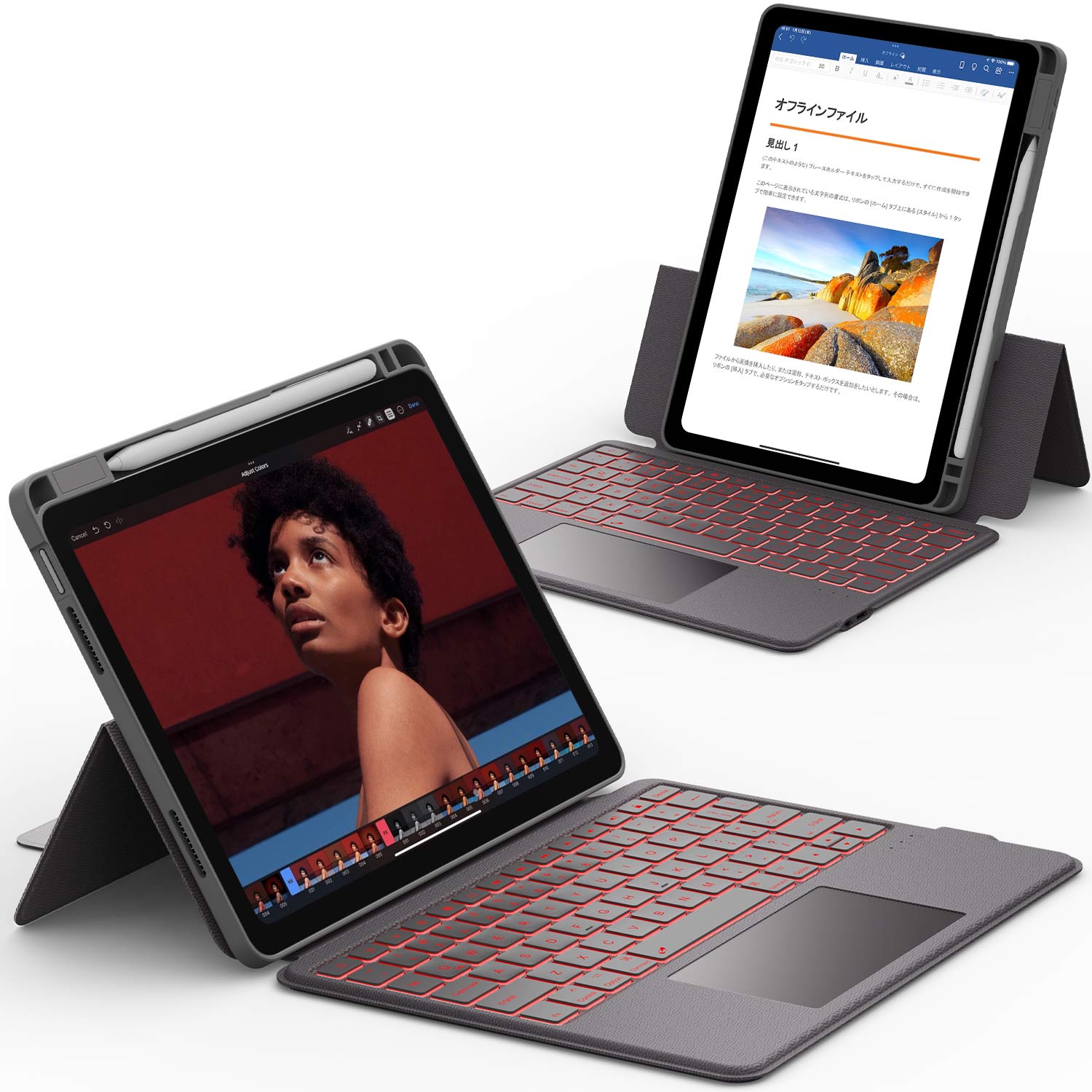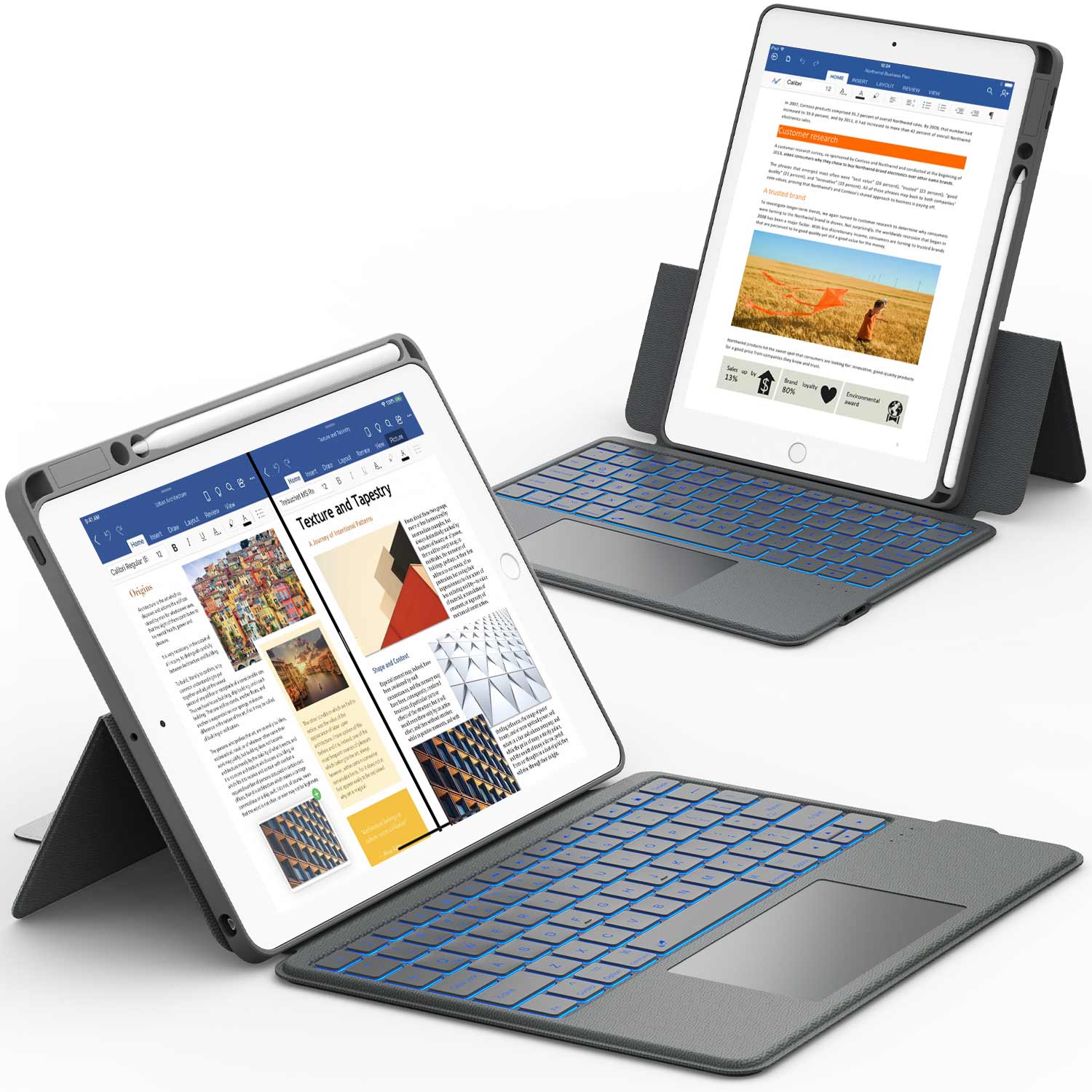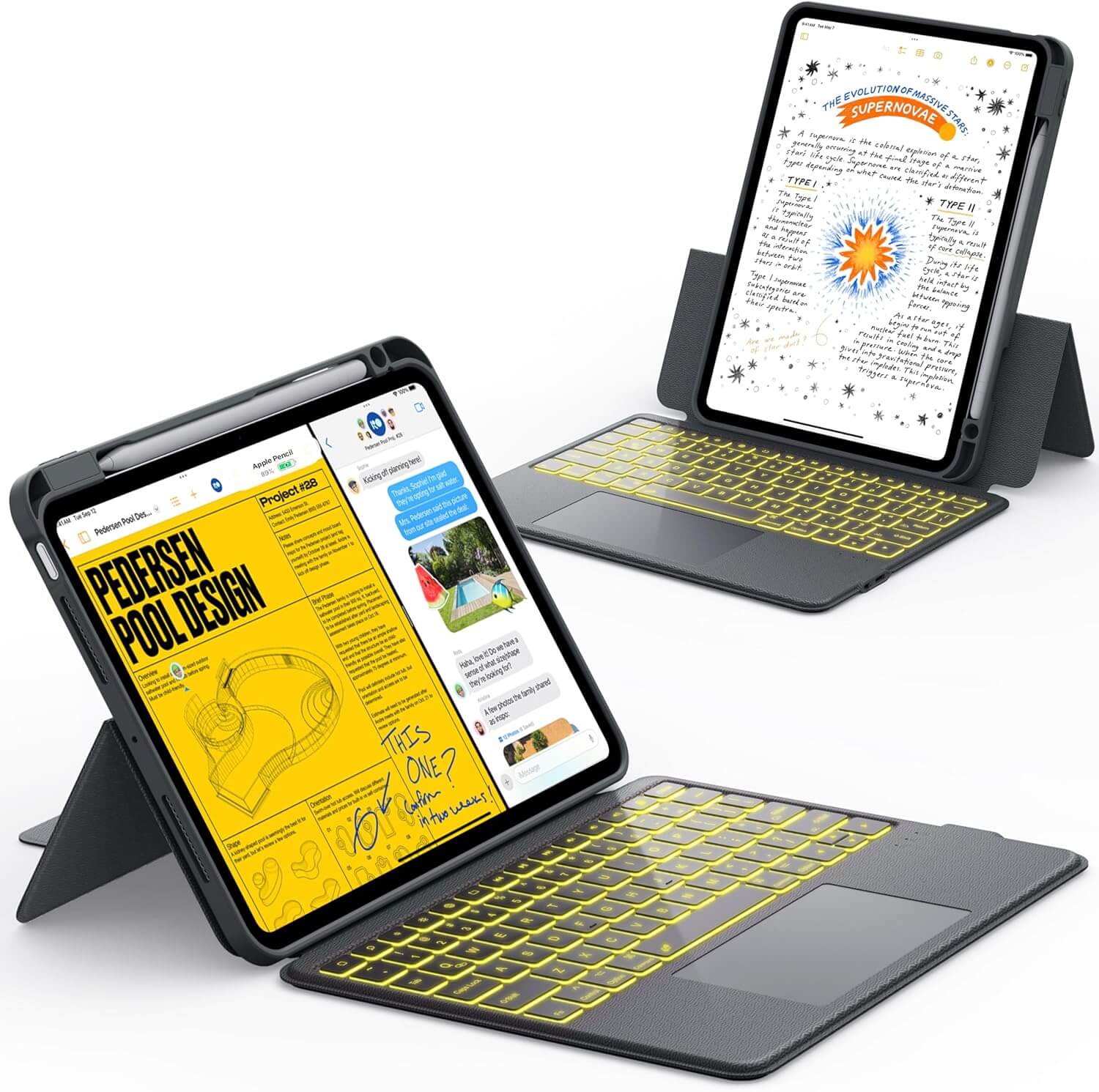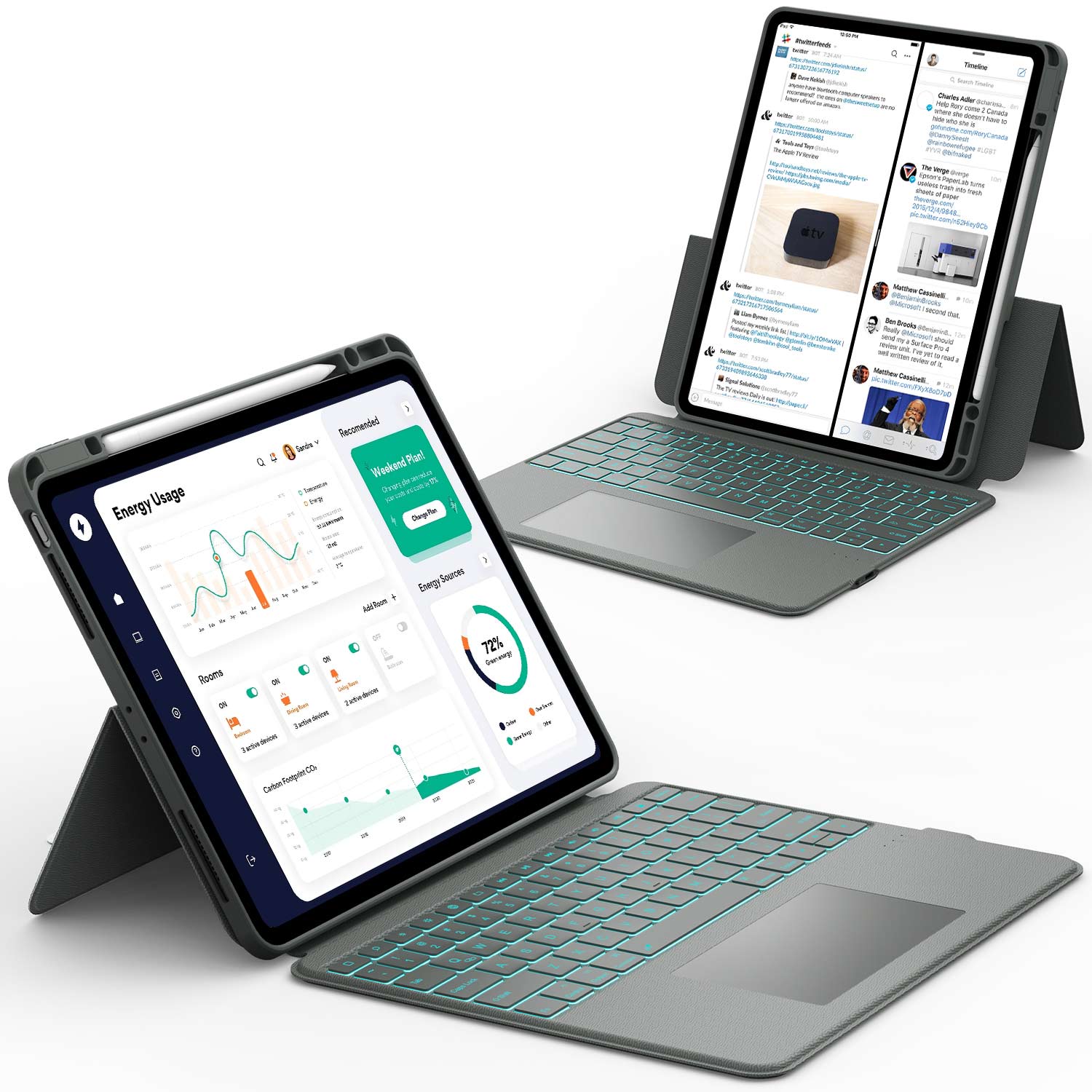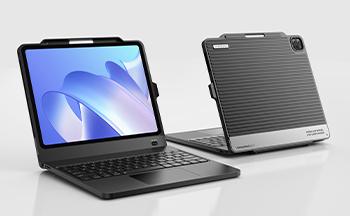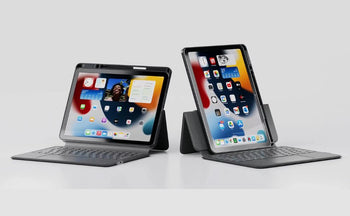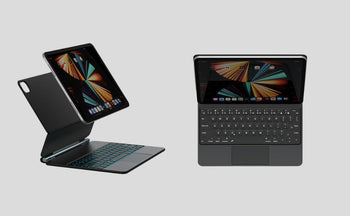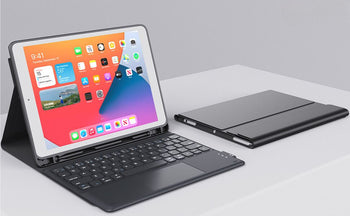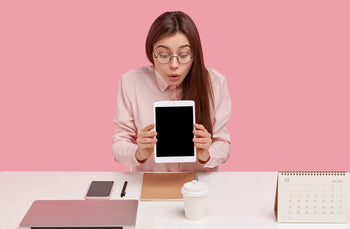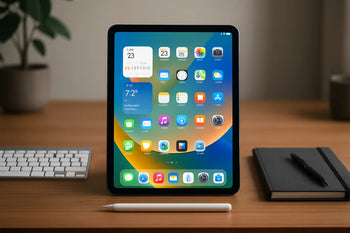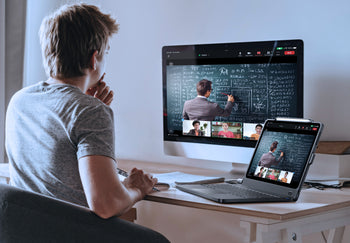If you’re searching for the best tablet for note taking with a stylus, you want something that feels natural and responds quickly. Staying organized matters, too, whether you’re jotting ideas, studying, or tackling work tasks.
The best tablet for note taking with stylus blends handwriting accuracy, solid app support, and a comfortable stylus experience.
There are plenty of tablets with great stylus support now. Apple’s iPad lineup, Android tablets, and even some Windows options all bring something unique to the table.
Some aim to mimic the feel of pen and paper, while others focus on handy features like app integration or custom writing tools. You’ll want to think about screen size, pressure sensitivity, and battery life to find your best match.
With so many choices, it’s tough to know where to start. Here’s a rundown of the best tablets for note taking, so you can find one that fits your study or work style.
The Best Tablets for Note Taking With Stylus

When you’re picking a tablet for notes, check the operating system and how the stylus works with it. Your main options are Android, iPad, Windows, or E-Ink tablets, and each has its own strengths.
It’s also worth noting if the stylus comes bundled or if you’ll need to buy it separately. That can shift the price and convenience quite a bit.
Android, iPad, Windows, and E‑Ink Options
If you want a tablet that just works with writing and drawing apps, the iPad is tough to beat. The iPad Pro and Air support the Apple Pencil, which is super precise and has barely any lag.
Android fans might like the Samsung Galaxy Tab S8, which comes with the S Pen. It feels natural, doesn’t need charging, and is ready to go right out of the box.
Windows tablets like the Microsoft Surface Pro give you a full desktop experience and stylus support. If you want to run pro software and take notes, that’s a solid pick.
E-Ink tablets like the Remarkable 2 focus on writing and reading. They’re easy on the eyes, have a paper-like feel, and the battery lasts for ages. That’s great if you want to avoid distractions and just write.
|
Tablet Type |
Stylus Support |
Best for |
|
iPad |
Apple Pencil (sold separately) |
Smooth apps, fast performance |
|
Android |
S Pen (usually included) |
Budget options, easy integration |
|
Windows |
Surface Pen (sold separately) |
Multi-tasking, pro software |
|
E-Ink |
Included stylus |
Focused writing, eye comfort |
Bundled vs Add‑On Stylus
Some tablets toss in the stylus, while others sell it separately. Samsung’s Galaxy Tab S series usually includes the S Pen, so you can start taking notes right out of the box.
With iPads and many Windows tablets, you’ll have to buy the stylus on its own. That bumps up the price, but you often get better build quality and extra features like more pressure levels or tilt support.
When a stylus is bundled, it’s built for that tablet, so accuracy and pairing are spot on. If you go for an add-on stylus, double-check compatibility—especially with Android or Windows, where options can get confusing.
What Makes a Great Stylus Note‑Taking Tablet

You want your tablet to respond instantly and naturally when you write. The screen should ignore your palm resting on it and not make weird marks.
It should be light enough to carry, last all day, and have a screen that feels roomy but not clunky. Sounds simple, but it’s a tall order.
Low Latency, Pressure and Tilt Sensitivity
Low latency means your lines show up right away—no weird delays. That’s what makes writing on glass feel almost like pen on paper.
Pressure sensitivity lets you make lines thicker or thinner, depending on how hard you press. Tilt sensitivity adds a bit of flair, changing the stroke if you angle the stylus. These features make your handwriting and sketches look real and detailed.
Flicker‑Free Screen and Palm Rejection
A flicker-free screen is just easier on your eyes, especially if you’re writing for hours. Flicker can get annoying and even cause headaches over time.
Palm rejection is a must. You can rest your hand on the screen without making a mess of stray marks. No one wants to hover their hand mid-air just to take notes.
Portability, Battery Life, and Screen Size
Portability matters. You don’t want to lug around a brick all day—something lightweight is key.
Battery life is another biggie. Most good tablets last 8 to 12 hours, which usually gets you through a full day.
Screen size is personal, but 10 inches or more is a sweet spot. It gives you enough space to write without feeling cramped, but the device still fits in your bag.
Choosing the right tablet is essential for school success. Check out our tips in How to Choose the Best iPads for College Students.
Best Tablets by Use Case

The right tablet depends on how you’ll use it. Some are built for portability and price, while others focus on detail and pro features. It really comes down to your note-taking style and what you care about most.
Students and Class Notes (Lightweight & Affordable)
Students need something light and affordable. The Samsung Galaxy Tab S6 Lite and Apple iPad 10th Gen both give you good stylus support without breaking the bank.
Battery life has to last through those marathon lecture days. Apps like OneNote or Notability fit the bill for simple, reliable notes.
A 10-inch screen is usually perfect—not too bulky, but enough space to write clearly. Skip the super pricey or heavy models, and look for smooth handwriting recognition and quick response.
Professionals (Stylus Accuracy & Productivity)
If you’re working, accuracy and productivity matter most. The Apple iPad Pro (2024) and Microsoft Surface Pro 9 shine here with precise stylus input and support for Office or Adobe apps.
Pressure sensitivity and palm rejection make your notes and sketches look sharp. Multi-tasking is a must, so you can jump between apps without lag.
Having ports and keyboard options helps if you type a lot or need to connect stuff. A bigger screen (12 inches or more) makes it easier to handle complex files.
Artists and Creative Work (Color, Size, and Precision)
Artists want color accuracy and stylus precision. The Apple iPad Pro with the Apple Pencil 2 is a favorite for its color range and pressure sensitivity.
The Samsung Galaxy Tab S8 Ultra stands out with its huge 14.6-inch AMOLED screen. Colors pop, blacks are deep, and you get tons of space for big projects.
Tilt support and quick stylus response help drawing feel natural. A big screen is easier on your hands for long sessions, and high resolution plus good color calibration keep your art looking right.
A great note-taking tablet deserves the right accessories. Explore The Best iPad Case for Writing With Apple Pencil to enhance your experience.
E‑Ink vs LCD for Writing Experience

If you’re torn between E‑Ink and LCD tablets for writing, the difference is pretty clear. E-Ink feels like paper and is easy on the eyes, while LCD is all about bright colors and sharp images.
Which one’s better? Well, it depends on your style. Do you want something simple and distraction-free, or do you need a screen that can handle everything from notes to Netflix?
Paper‑Like Feel vs Vibrant Screens
E‑Ink screens look and feel like paper. No glare, smooth writing, and they’re gentle on your eyes—even after hours. You can write for ages without getting tired, and you won’t get sucked into apps or notifications.
Plus, E‑Ink tablets sip battery power, so you rarely need to charge them. LCD screens, on the other hand, are vivid and versatile. They’re awesome for more than just writing—think videos, web browsing, or games.
The downside? LCD screens can glare, strain your eyes, and run down the battery faster. And with all those apps and notifications, distractions are just a tap away.
Kindle Scribe, reMarkable 2, Boox Note Air3 C (E‑Ink Options)
The Kindle Scribe gives you a paper-like surface for both e-books and note-taking. If you want easy reading mixed with writing, it’s a solid choice, though it doesn’t have as many advanced note apps as some others.
The reMarkable 2 stands out for its almost lag-free writing and super light build. Writing on it feels uncannily close to real paper, and its interface stays clean and distraction-free. If you’re easily sidetracked, this one’s hard to beat.
The Boox Note Air3 C shakes things up by adding color to E‑Ink. You can highlight and draw with color, and the screen stays gentle on your eyes. It’s a nice pick if you want a paper-like feel but crave a splash of visual flair.
|
Tablet |
Strengths |
Best For |
Battery Life |
|
Kindle Scribe |
Smooth writing, e-book support |
Reading with note-taking |
Weeks |
|
reMarkable 2 |
Paper-like feel, lightweight |
Focused note-taking |
Days to a week |
|
Boox Note Air3 C |
Color E‑Ink, flexible use |
Artists, color note-takers |
Days |
Your tablet is only as good as your note-taking app. Find out which is best for students in our article: Which is Better: GoodNotes or Notability for Students?
OS and App Support for Stylus Notes

When you pick a tablet for taking notes with a stylus, the operating system and available apps really matter. The right combo can make writing, organizing, and sharing notes a breeze—or a headache. It’s honestly worth digging into what each OS offers, since they all have their own unique tools.
Android: Samsung Notes, OneNote en.wikipedia.org
If you choose an Android tablet, Samsung Notes is a solid place to start, especially if you’re on a Samsung device. It lets you handwrite, draw, type, and even record audio notes. You can organize everything into folders and sync to Samsung Cloud, so your notes don’t just vanish.
Microsoft OneNote is another favorite and works well across different Android tablets. It supports stylus handwriting, typing, drawing, and even clipping from the web. OneNote syncs through Microsoft 365, so you can grab your notes anywhere.
Stylus support on Android tablets is usually pretty good, though it varies by model. Higher-end tablets offer pressure sensitivity and palm rejection, making the writing feel more natural.
iPadOS: GoodNotes, Notability
For iPad folks, GoodNotes and Notability are the big names. Both lean heavily into stylus use, offering precise handwriting, shape recognition, and text conversion. GoodNotes lets you tweak page layouts and import PDFs—super handy for marking up documents.
Notability’s claim to fame is mixing handwritten notes with audio recordings, which is perfect for lectures or meetings. You can organize notes into subjects and dividers, keeping things tidy if you juggle a lot of topics.
The Apple Pencil pairs almost magically with iPads, giving you pressure and tilt sensitivity, palm rejection, and barely-there latency. Writing or sketching feels smooth and direct, which is honestly pretty satisfying.
Windows: OneNote, Drawboard
On Windows tablets, Microsoft OneNote is a powerhouse for note-taking with a stylus. You can write, draw, or type, and organize everything in notebooks. OneNote syncs with OneDrive, so your work stays safe and accessible on any device.
Drawboard is another popular Windows app, especially if you need to mark up PDFs or sketch. It has advanced tools like layers and customizable pens, making it a good pick if you want to mix handwritten notes with technical drawings.
Most Windows tablets support a wide range of stylus pens, including Microsoft’s Surface Pen. You get decent pressure sensitivity and features tailored to Windows apps, so writing feels pretty natural.
Accessories to Enhance Note‑Taking Setup
Having a good tablet is just the beginning. Accessories can protect your device, keep your stylus handy, and make writing more comfortable. The right extras help you stay organized and can really improve how your notes turn out.
Lined Cases With Pen Holders
Lined cases do more than shield your tablet. They often have a built-in pen holder, so your stylus is always right there. It’s a small thing, but it saves you from losing your pen mid-day.
Some cases come with soft, padded interiors to prevent scratches. Many also double as stands, letting you prop up your tablet at a comfy angle for writing or viewing. I’d look for cases made with sturdy materials like PU leather—they tend to last longer.
Matte Screen Protectors
Matte screen protectors cut down glare from lights and windows, which makes long note-taking sessions easier on your eyes. They also give your screen a paper-like texture, so your stylus glides more naturally and you get better control for fine writing or sketching.
They also help protect against scratches and fingerprints. Just make sure you get one that’s easy to install and doesn’t mess with touch sensitivity or color accuracy.
Extra Stylus Tips or Chargers
Stylus tips wear out, especially if you’re scribbling every day. Keeping a few extras on hand lets you swap them out without skipping a beat. Different tips can feel firmer or smoother, so you can pick what works best for you.
If your stylus is rechargeable, having spare chargers or cables is a lifesaver. Most charge via USB-C or a wireless dock, so stash a charger at your desk or in your bag. That way, your stylus is always ready to go.
How to Pick the Best Note‑Taking Tablet
Picking the right tablet for notes comes down to how the stylus works with the tablet, your budget, and how long the device will stay supported. You want something that feels good to write on, fits your price range, and won’t become obsolete too fast.
Match Stylus and Tablet Hardware
The stylus and tablet need to play nicely together for smooth, accurate writing. iPad Air, for example, uses the Apple Pencil, which offers pressure sensitivity and tilt control. Samsung’s Galaxy Tab series comes with the S Pen, which doesn’t need charging and supports handwriting recognition.
Look for low latency (so there’s barely any delay), palm rejection (so your hand doesn’t leave stray marks), and a stylus that feels good in your grip. Screen type matters too—LCDs are bright and crisp, but e-ink tablets like the reMarkable 2 are easier on your eyes and feel more like paper.
Budget Tiers: Entry, Mid, Premium
Your budget will narrow things down. Entry-level tablets cost about $150 to $300 and usually have basic stylus support and smaller screens. They’re fine for simple notes—great for students who don’t want to spend much.
Mid-tier tablets, in the $300 to $700 range, come with better screens, faster chips, and improved stylus features. Think Samsung Galaxy Tab S7 or iPad Air. These hit a sweet spot for serious note-takers who want more polish.
Premium tablets start at $700 and go up. You get the best stylus precision, long battery life, and extras like multitasking and handwriting-to-text. iPad Pro and Onyx Boox are in this league.
Updates, Warranty, and Resale Value
Software updates can add new features and keep your tablet running smoothly. Apple tablets usually get updates for over five years, while some Android devices get less. It’s worth checking before you buy.
Warranty matters if your stylus or screen breaks. Most tablets come with a year of coverage, but you can often buy more. Knowing repair costs ahead of time can save you headaches.
Resale value counts if you plan to upgrade later. Apple devices usually hold their value better than most Android or e-ink tablets. That can make selling your old device a bit less painful.
Taking notes with a stylus shares many similarities with digital drawing. Avoid rookie errors by reading our article: 6 Common Mistakes Beginners Make in iPad Drawing.
Final Thoughts
Finding the best tablet for note-taking with a stylus depends on your needs—speed, feel, or versatility.
iPad and Android tablets offer smooth writing and great apps, while Windows tablets bring full multitasking. E-ink devices keep things simple and paper-like. Consider where and how you’ll use your tablet, then choose the screen, stylus, and software that fit your style.
Once you’ve picked your device, protect it and boost your productivity with Chesona’s tablet cases—explore iPad cases with stands, flip iPad cases, and magnetic iPad cases for every need. Check out the Chesona collection to upgrade your experience today!
If you’re interested in both note-taking and creative work, see our guide: How to Choose the Best iPad for Drawing.
Frequently Asked Questions
Is a pen tablet worth it for note-taking?
If you want a natural writing feel with digital perks, a pen tablet is pretty handy. You get the hand-written experience, but your notes are saved electronically—no more losing pages, and it’s way easier to organize.
Pen tablets often have pressure sensitivity and palm rejection, so writing feels smooth and accurate. If you take lots of notes or sketch diagrams, you’ll probably save time. But if you only jot down the occasional note, a regular tablet might be enough. Definitely check for good battery life and a responsive screen.
Is a stylus pen good for note-taking?
A stylus pen beats using your finger for most people. You get more control and precision, which is key for detailed notes or drawing. Some styluses even have pressure sensitivity, so your lines look more like real pen and paper.
The best styluses also support palm rejection and have shortcut buttons for erasing or highlighting. It’s just a more comfortable experience, especially if you’re writing for a long stretch.
Is it better to take notes by hand or on a tablet?
Handwriting notes on paper can help memory since you slow down and process the info. But writing on a tablet with a stylus gives you digital perks—easy edits, searchable text, and organizing files without stacks of notebooks.
If you need to share or back up notes, tablets are a win. You also save space. On the flip side, tablets can distract you with notifications, and some folks still prefer the feel of real paper. Honestly, it depends on what helps you focus and remember best.
What is the best way to take handwritten notes?
Pair a quality stylus with a tablet made for note-taking—like an iPad with Apple Pencil or a Samsung Galaxy Tab with S Pen. These combos give you smooth writing with almost zero lag, so your pen strokes show up instantly.
Try apps like OneNote, GoodNotes, or Notability. You can organize notes, highlight, and add images or audio. Using templates or split-screen can help keep things neat. And yeah, practicing clear, consistent writing makes reviewing your notes way easier later.
What is the best way to digitize handwritten notes?
If you like using paper, try scanning your notes with an app like Microsoft Lens or Adobe Scan. These apps turn your handwritten pages into PDFs or images.
You can then store and organize those files on your tablet or computer. It’s pretty handy if you want to keep everything in one place.
Some people go for apps with handwriting recognition, like Nebo or MyScript. These apps can turn your scribbles into editable text.
That way, searching and editing your notes feels a lot easier. I mean, who doesn’t want to find old notes in seconds?
Plenty of tablets also sync with cloud storage like Google Drive or iCloud. Your notes get saved automatically and you can grab them from anywhere.
